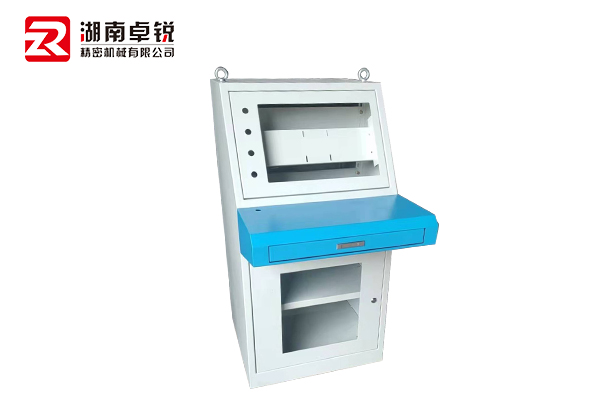Oxide scale is a layer of oxide formed by the chemical reaction between a metal surface exposed to air for a long time and gases such as oxygen and water vapor. In the process of Sheet Metal Processing, the problem of oxide scale often has a negative impact on the quality and appearance of the product. The following will introduce some methods of using Zhuzhou sheet metal processing to solve the problem of oxide scale.
Firstly, common cleaning and rust removal methods in sheet metal processing can be used to solve the problem of oxide scale. For example, solvents or acidic solutions can be used to clean metal surfaces and remove surface oxide scales. Commonly used acidic solutions include acid wash solutions, dilute hydrochloric acid, etc., which can to some extent remove oxygen and skin. In addition, mechanical rust removal methods such as grinding wheels, sand belts, and other tools can be used to polish the metal surface. These methods can effectively remove oxide skin, but attention should be paid to safety and environmental issues during use.
Secondly, sandblasting and polishing processes in sheet metal processing in Zhuzhou can also solve the problem of oxide scale. Sandblasting is the process of spraying sand particles onto a metal surface using high-speed airflow to remove oxide scale and impurities, making the metal surface smoother. Polishing is the process of using mechanical friction to grind metals with abrasive or polishing agents, making the metal surface brighter. These processes can effectively address the issue of oxide scale while also improving the surface quality of the product.
 In addition, protective coatings in sheet metal processing can also be used to solve the problem of oxide scale. A protective coating can form a protective film on the metal surface to prevent oxidation reactions from occurring. Common protective coating materials include paint, coatings, and films. Suitable protective coating materials can be selected for processing according to specific circumstances. The selection of protective coatings should take into account the product‘s usage environment and requirements, as well as the coating‘s corrosion resistance and adhesion properties.
In addition, protective coatings in sheet metal processing can also be used to solve the problem of oxide scale. A protective coating can form a protective film on the metal surface to prevent oxidation reactions from occurring. Common protective coating materials include paint, coatings, and films. Suitable protective coating materials can be selected for processing according to specific circumstances. The selection of protective coatings should take into account the product‘s usage environment and requirements, as well as the coating‘s corrosion resistance and adhesion properties.
In addition, electroplating in sheet metal processing is also a commonly used method to solve the problem of oxide scale. Electroplating is the process of forming a layer of metal anode on a metal surface, which reduces metal ions to a metal layer through the action of current. Common electroplating methods include chrome plating, zinc plating, nickel plating, etc. Electroplating can effectively prevent oxidation reactions and improve the appearance and corrosion resistance of products.
In general, Zhuzhou Sheet Metal Processing Company can solve the problem of oxide scale through methods such as cleaning and rust removal, sandblasting and polishing, protective coating, and electroplating. In practical applications, selecting appropriate methods and processes based on specific situations and requirements can effectively improve product quality and surface smoothness, meeting the needs of different fields and industries.


 Spanish
Spanish Arabic
Arabic Spanish Basque
Spanish Basque Portuguese
Portuguese Belarusian
Belarusian Japanese
Japanese Russian
Russian Icelandic
Icelandic Bulgarian
Bulgarian Azerbaijani
Azerbaijani Estonian
Estonian Irish
Irish Polish
Polish Persian
Persian Boolean
Boolean Danish
Danish German
German French
French Filipino
Filipino Finnish
Finnish Korean
Korean Dutch
Dutch Galician
Galician Catalan
Catalan Czech
Czech Croatian
Croatian Latin
Latin Latvian
Latvian Romanian
Romanian Maltese
Maltese Malay
Malay Macedonian
Macedonian Norwegian
Norwegian Swedish
Swedish Serbian
Serbian Slovak
Slovak Slovenian
Slovenian Swahili
Swahili Thai
Thai Turkish
Turkish Welsh
Welsh Urdu
Urdu Ukrainian
Ukrainian Greek
Greek Hungarian
Hungarian Italian
Italian Yiddish
Yiddish Indonesian
Indonesian Vietnamese
Vietnamese 简体中文
简体中文 Haitian Creole
Haitian Creole








